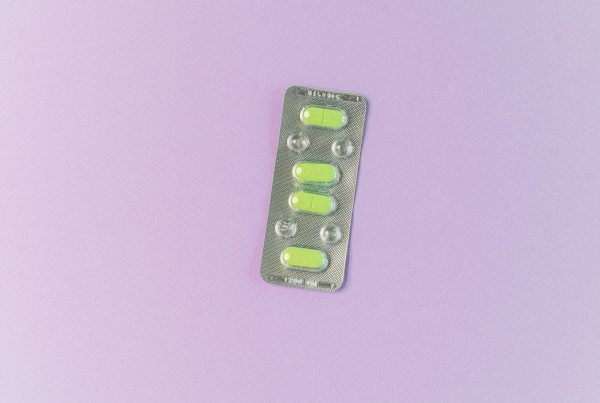Skin picking might seem like a pretty mindless thing to do, right? A lot of us can relate to noticing a pimple or blemish on our face and feeling the urge to pick at it even though we know we shouldn’t. Regardless of whether you actually pick the spot or ignore it successfully, this moment does not tend to last very long. Most people are able to continue on with their days, and may even forget that they noticed a spot on their face. But what if you couldn’t stop yourself from picking your skin all the time? What if you started picking your skin so much that you started to create sores and scabs on your body? Even though you wanted to stop, you find yourself picking your skin for hours and hours and the more you do it the harder it is to stop yourself?
This experience may seem hard to fathom, but it is something that those with dermatillomania, or skin picking disorder, are very familiar with. In the US, dermatillomania affects about 2% of adults at any time, and up to 5.4% of individuals experience it at some point in their lives. In this blog, we will outline how this disorder manifests and how dermatillomania’s symptoms affect those who struggle with it everyday.
Intro to Dermatillomania
Dermatillomania, also known as excoriation disorder, is currently classified under Obsessive-Compulsive and Related Disorders by the DSM-V. According to the APA, this disorder describes a recurrent and excessive picking at one’s skin, which ultimately leads to lesions, distress and impairment for an individual. As described in the introduction, most everyone will pick their skin from time to time, but this is usually due to a superficial imperfection or surface-level pimple, blemish, or scab. For those with dermatillomania, however, individuals have a persistent urge to pick their skin to the point of creating tissue damage and deep skin lesions. Even when there is no visible or underlying dermatological condition that may lead to the skin picking (like dryness or itchiness), those with this condition are unable to stop picking their skin. This can include squeezing, digging, rubbing, or scratching the skin. Individuals may also use items like tweezers, safety pins, pimple extractors, their fingernails, and and their fingertips to help themselves pick at more than one part of the body.
Dermatillomania’s worldwide prevalence numbers are still unknown, but studies have shown that up to 9% of those who struggle with pruritus, or itchy skin, suffer from dermatillomania as well. In addition, a higher prevalence of this disorder is found in college-age students at 3.8%, and individuals with body dysmorphia at 28%. Women are more likely to suffer from dermatillomania than men, and while this condition tends to form in adolescence, it may not be diagnosed until a person reaches 30-40 years of age. At the onset of diagnosis, symptoms may persist for a few months or up to 33 years.
How it Starts
Typically, patients with dermatillomania report intense, uncontrollable itchiness before a skin picking session. Others also report feeling burning, warm, pain, dryness, or some kind of physical tension. Individuals tend to start with picking existent skin lesions like scabs, acne scars, or even insect bites, but some also pick at normal, unblemished skin. Picking tends to be focused on certain points of the body that can be most easily reached with the hands. These places include the head, (face, scalp, and neck), the arms (hands and fingers), or the legs (thighs, feet, and toes). Over time, this level of intense and frequent picking eventually leads to deep lesions that become inflamed and can also lead to mental health complications.
Many times, skin picking starts out as a reaction to unpleasant emotions about one’s appearance or skin. Something like a bump, sore spot, or even a belief about how the skin ‘should’ look can trigger someone to pick their skin. People may start to engage with this behavior as a way to remove and diminish an imperfection they think that they have, and picking at the spot provides positive emotions, such as gratification and relief. After these feelings subside, however, individuals tend to feel shame, embarrassment, and stress at the fact that they cannot control their urge to pick.
With dermatillomania, there are two types of ways that people will pick the skin: automatic and focused picking.
Automatic Picking
When individuals automatically pick their skin, they do so without knowing they are doing it. Picking can occur in sessions that range between a few minutes and 12 hours, and automatic pickers will do so throughout the day or when they are doing passive activities. These types of activities include watching TV, reading, studying, or relaxing. Those with dermatillomania describe these sessions as being in a ‘trance-like’ state, and are completely unaware of their actions. Subconsciously, individuals will run their hands across areas of the skin in order to scan and find any spots that they find different or imperfect. When they find these spots, they might become places for them to eventually pick in a focused way.
Focused Picking
With focused picking, individuals are aware of their actions, but they cannot stop themselves and it tends to be more destructive. Individuals will fixate on an area or multiple areas of their skin to pick at, and as mentioned before, this can go on for hours. Individuals who struggle with this often pick their skin because of a compulsion, and they feel as though the only way to relieve their urge is to engage with it. They may start out by picking automatically, but slowly the urges become more frequent and more intense. In addition, those with dermatillomania may engage in this behavior to avoid other intense or negative thoughts that they may be experiencing. Focused picking can serve as relief for those who are experiencing other negative emotions, like stress and anxiety.
Is dermatillomania part of OCD?
Although dermatillomania is classified under Obsessive-Compulsive and Related Disorders in the DSM-V, its symptoms distinguish it from obsessive-compulsive disorder (OCD). OCD is a mental disorder that affects 2% of the world population, or over 156 million people. This illness characterizes individuals who have uncontrollable, obsessive thoughts and compulsive behaviors that they have the urge to repeat over and over again. The obsessions that those with OCD have are repeated thoughts, mental images, and urges that cause them anxiety. Moreover, compulsive behaviors are repetitive behaviors that people with OCD feel the urge to do in response to their obsessive thoughts. For example, a person with OCD who has obsessive thoughts and fears surrounding germs may excessively clean their surroundings or wash their hands multiple, multiple times as a response to that fear. Even though they act out on these compulsive behaviors, those with OCD may not derive any pleasure or happiness from repeating these behaviors. Instead, they may feel slight, fleeting relief from the anxiety that their obsessions caused.
Now, it may seem that dermatillomania may just be one type of way that OCD manifests. Of course, there are similarities. In both OCD and dermatillomania, patients experience compulsive behaviors that they feel no control over. Even when they know what they are doing is harmful or unnecessary, individuals who struggle with either type of these conditions have unmanageable urges that they cannot talk themselves out of. They feel that the only way to get rid of the urge is to engage in compulsive behaviors; for OCD patients, this compulsion varies, but for dermatillomania, it is the skin picking.
What distinguishes dermatillomania from OCD are the presence of obsessions. Though patients with dermatillomania experience the compulsive behaviors that OCD patients also have, they do not experience unwanted obsessions they cannot control. When they pick at their skin, it is specifically the urge to do the physical action of skin picking that preoccupies the patient. Patients with OCD might pick at their skin because they may have repetitive thoughts that convince them that there might be dirt or impurities on the skin. While those with dermatillomania might have also started picking the skin due to the thought that there were impurities on the skin, after a while, the reasoning behind picking the skin fades, and these patients struggle with the fact that they just cannot stop picking their skin even if they want to. Compulsion, not an obsession, is what they struggle with. In addition, people with dermatillomania feel a lot of relief and positive emotion when they complete the behavior, while OCD patients feel very little to no relief. Lastly, OCD does not typically cause people to inflict self-injury to oneself. With dermatillomania, self-damage is quite common and can even be expected.
Treatment Options
Research shows that medication and therapy combined together helps patients with dermatillomania more than just one or the other. Skin picking can create or exacerbate topical wounds on patients’ bodies, and this leads to other complications like bleeding, scarring, and even infections. In some cases, individuals may need to undergo skin grafting or get on antibiotics to treat their wounds. For lesser damage, patients might try to cover their scars and wounds with makeup, clothes, or other items to hide what they have done. It can be very exhausting and cause a lot of shame, anxiety, and depression for individuals who want to stop themselves but can’t.
When patients start to feel hopeless about their situation, this is where treatment becomes very necessary. Research has shown that medication such as SSRIs (antidepressants) may help reduce compulsive behaviors in these patients. In addition, when it is coupled with therapy like cognitive-behavioral therapy (CBT), patients may develop coping mechanisms and educational strategies to help them shift their behavior. Another type of therapy called habit reversal therapy may assist patients in becoming more aware of their patterns and learn to break habits. This therapy encourages people to focus on the circumstances that influence their skin picking, so that they can learn to either avoid situations that trigger them, or catch themselves in the act before it goes on for too long. It also encourages them to respond to their problematic behaviors with a competing behavior to stop the action. For example, if someone finds themselves in a situation where they are about to or are picking their skin, consciously choosing to put your hands out and put them into fists for a certain amount of time can help ride out the urge to skin-pick.







